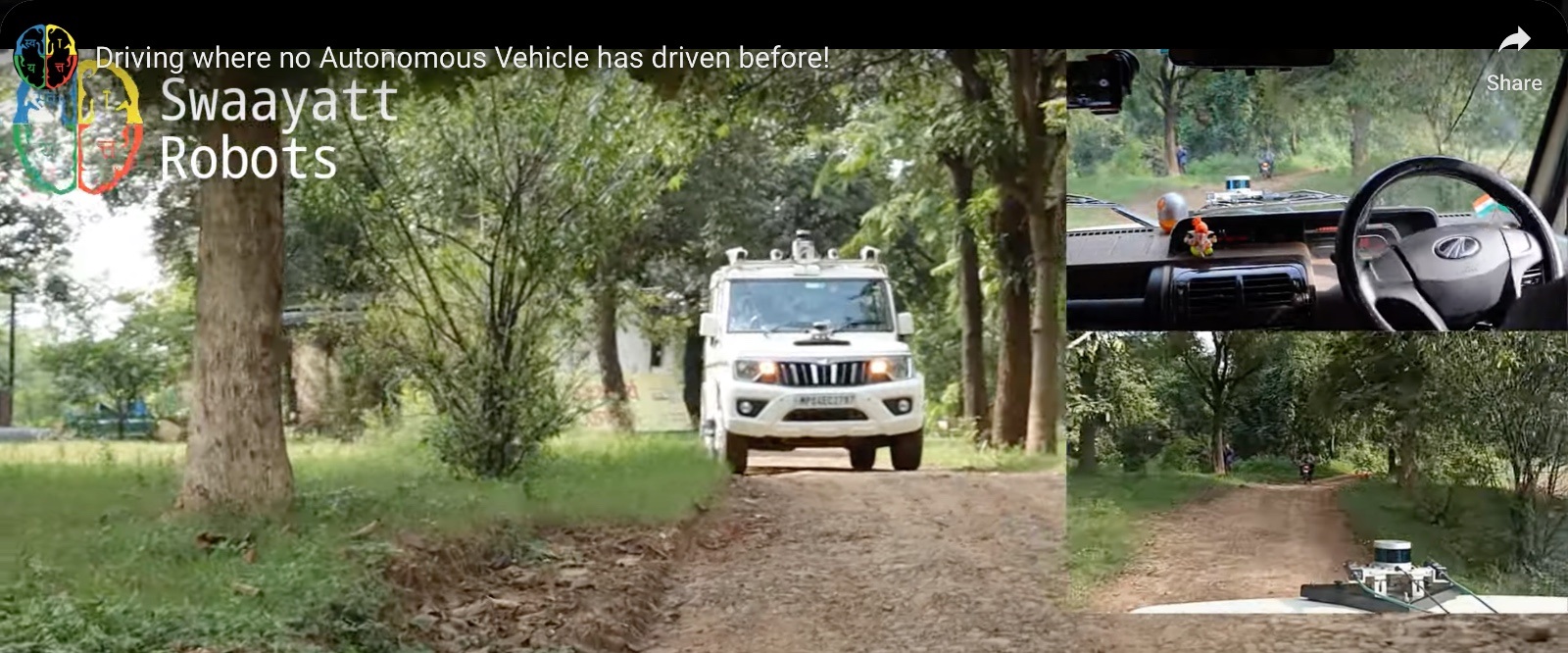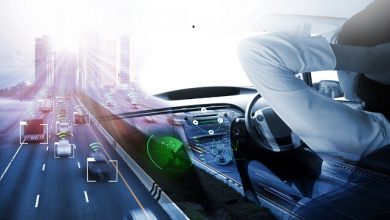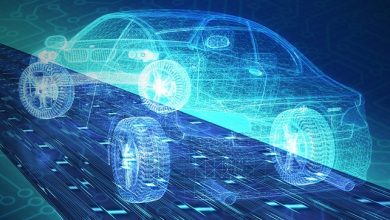Swaayatt Robots: An Indian autonomous vehicle on road in Bhopal

Introduction
Swaayatt Robots, is a Bhopal-based company was founded in 2014 by Sanjeev Sharma, an alumnus of IIT Delhi. Swaayatt Robots is focused on developing autonomous vehicle technology, specifically targeting affordable and accessible self-driving solutions for India and other regions with challenging traffic conditions.
One of the key features of Swaayatt’s technology is that it’s designed to work in the challenging traffic conditions of India, including unstructured environments and tight spaces. They achieve this using specialized algorithms that are less demanding on computational power, making their self-driving systems more affordable. Swaayatt prioritizes camera-based perception systems, making the car model less critical as long as it has good camera placements.
It has achieved a significant breakthrough with their latest research project: high-speed off-road autonomous driving with bidirectional traffic negotiation. This innovation holds immense potential for the military and various other off-road applications.
Addressing Challenges, Delivering Solutions
The traditional challenges of autonomous driving are amplified in off-road environments. Unpredictable terrain, lack of lane markings, and the absence of standardized traffic rules make navigation a complex task. Swaayatt Robot’s demonstration addresses these challenges by equipping their autonomous vehicle with a unique set of capabilities:
- Seamless Off-Road Navigation: The vehicle can navigate rough terrain while maintaining stability and control. This is crucial for military operations in remote areas and for civilian applications in search and rescue or disaster response scenarios.
- Bidirectional Traffic Negotiation: Perhaps the most impressive feat is the ability to handle oncoming traffic, even when it doesn’t adhere to traffic rules. The vehicle can intelligently assess the situation and adjust its course to avoid collisions. This is particularly relevant in countries like India, where traffic flow can be chaotic.
- Adaptability to Traffic Behavior: The system can distinguish between vehicles following traffic rules and those that aren’t. It reacts accordingly, avoiding them from the left for rule-abiding vehicles and from the opposite side for those approaching from the wrong direction. This “soft-traffic-rules adherence” demonstrates the system’s ability to handle real-world complexities.
Current Performance and Future Goals
Swaayatt Robot’s autonomous vehicle can currently perform these maneuvers at speeds of up to 44 kilometers per hour. During negotiation, the vehicle slows down to safe speeds before executing avoidance maneuvers. However, the company is actively scaling up the system to handle relative speeds of 60-80 kilometers per hour.
This project builds upon Swaayatt Robot’s previous successes, including achieving near human-speed off-road driving and generic traffic negotiation. Their ultimate goal is to create a system that can perform these maneuvers entirely autonomously, without relying on perception algorithms.
Military Applications
While the immediate benefits lie with the Indian armed forces, who can utilize these vehicles for reconnaissance and transportation in challenging terrains, the implications extend far beyond the military. This technology can be adapted for various off-road applications, such as:
- Search and Rescue: Autonomous vehicles can navigate difficult terrains to locate missing persons or deliver aid in disaster zones.
- Mining and Construction: They can transport materials and equipment in remote areas, improving efficiency and safety.
- Agriculture: Autonomous vehicles can be used for tasks like crop monitoring and field preparation in off-road terrains.
The Road Ahead: Unsupervised Learning and Overtaking Maneuvers
Swaayatt Robots is continuously pushing the boundaries of autonomous vehicle technology. They are exploring unsupervised and reinforcement learning techniques to enable their vehicles to learn overtaking maneuvers at high speeds in off-road environments. This will be a significant development, further enhancing the capabilities of these autonomous vehicles.
Swaayatt Robot’s groundbreaking research paves the way for a future where autonomous vehicles can navigate complex off-road environments with human-like intelligence. This technology has the potential to revolutionize various sectors, from military operations to civilian applications, making transportation in challenging terrains safer, more efficient, and more reliable.
Insight into Swaayatt Robot’s Car Model Strategy
Specific details regarding the exact car models used by Swaayatt Robots for their research aren’t publicly available. This information might not be readily shared by the company due to ongoing development or strategic reasons.
However, based on news articles and interviews, can infer that Swaayatt Robots likely utilizes readily available car models for their research platform. This aligns with their focus on affordability and scalability. They might modify these cars with additional hardware like cameras and computational units to gather data and run their autonomous driving algorithms.
Previous Demonstrations and Upcoming Developments
Swaayatt Robots has a history of impressive demonstrations, including near-human speeds off-road driving in April 2023 and generic traffic negotiation in September 2023. The culmination of these demos leads to the current state-of-the-art technology that will soon be showcased in upcoming demonstrations.
Conclusion
The advancements made by Swaayatt Robots not only cater to the needs of the Indian armed forces but also align with the research interests of international defense agencies like Defense Advanced Research Projects Agency (DARPA) and the US Department of Defense. These organizations are actively seeking solutions to enhance the capabilities of autonomous vehicles in military operations, and Swaayatt Robot’s research contributes significantly to this field.
As Swaayatt Robots continues to push the boundaries of autonomous driving technology, their work is set to revolutionize the way military and off-road operations are conducted, offering safer and more efficient solutions for the future.



